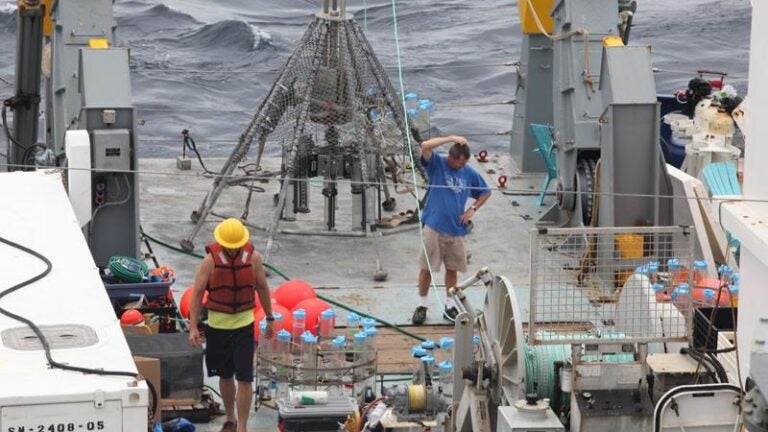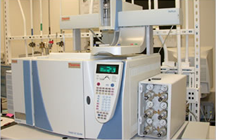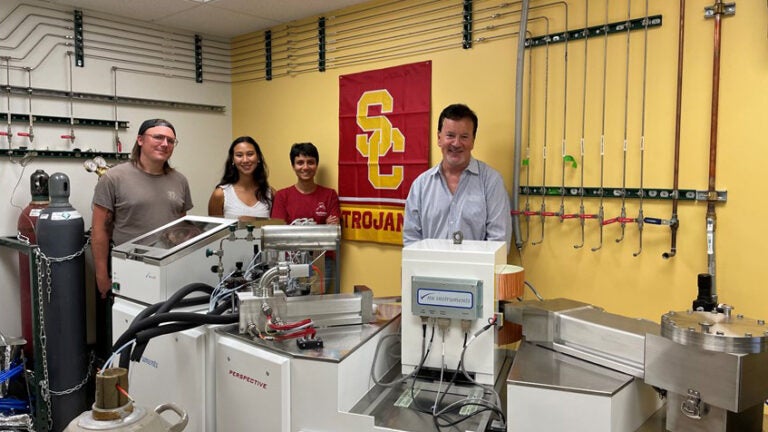Berelson Lab
The Berelson Lab combines standard inorganic chemical analytical facilities with some novel instrumentation, including MIMS and NOx Box for N gas and solute studies, microfluidics experimental systems, microbial respirometers, and a benchtop environmental SEM with EDS for solid phase sediment and biological sample extraction.
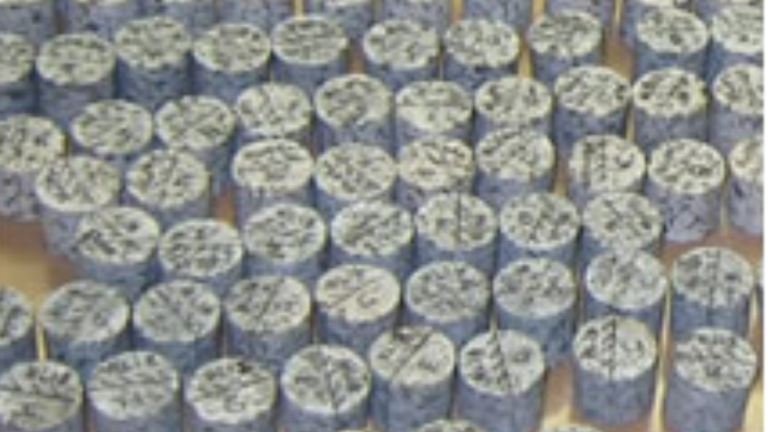
Paleomagnetism and Rock Magnetism Laboratory (PMRL)
The PMRL has facilities for discrete sample paleomagnetic and rock magnetic measurements, including a two-story magnetic-field shielded room complex, which houses a 2-G cryogenic magnetometer with inline AF demagnetizer (up to 200 mT), a Molspin spinner magnetometer, ASC thermal and A.F. demagnetizers, and AGICO KLY-4s AMS (anisotropy of magnetic susceptibility) system with attached furnace for high temperature measurements, all under computer control. A separate rock magnetism laboratory houses a Princeton Applied MicroMag with low temperature (<10 °K) capability, Bartington susceptibility bridge (including frequency-dependent capability), and ASC 1T pulse magnetizer for related rock magnetic studies. The laboratory complex also contains a refrigerated walk-in 12’x14′ core repository with storage racks for 1000 D-tubes.
Feakins Lab
Sarah Feakins’ Lab contains facilities for organic geochemistry and isotope biogeochemistry. Instrumentation includes an Accelerated Solvent Extraction (ASE) by Dionex Corporation for solvent extraction; a vacuum line and ‘Sternberg’ batch distillation apparatus for cryogenic water extraction; an Agilent 6890/7683 GC-MSD for biomarker idenfication and a Thermo Scientific GC-IRMS including an Isolink with parallel combustion furnace and pyrolysis furnaces for compound specific analysis of carbon and hydrogen isotopes. Applications include modern plant tissue, recent sedimentary deposits and geological samples.
Stott Climatology Laboratory
The climate change laboratory at USC houses instrumentation used to extract climate variables from various archives, such as marine sediment cores, trees, and cave deposits. The instrumentation housed in the climate change laboratory includes a suite of 4 stable isotope ratio mass spectrometers, an inductively coupled atomic emission spectrometer and a cavity ring-down spectrometer. The laboratory also houses an array of vacuum extraction lines for preparation of samples for isotopic measurements. The Lab houses computer work stations, a wet laboratory, and microscope work stations where students carry out their own independent research.
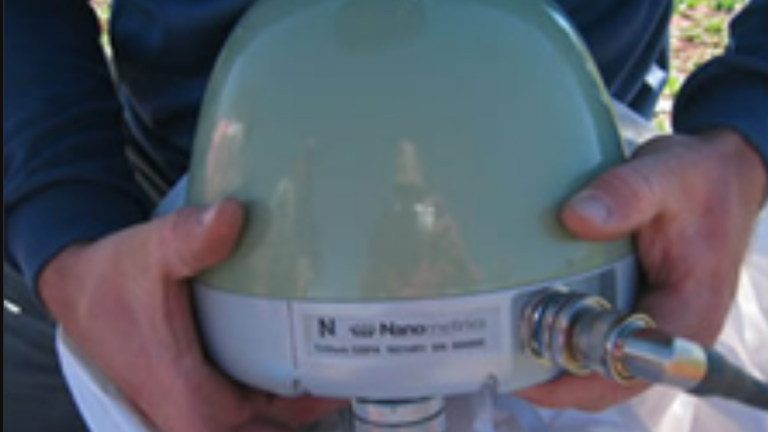
Geophysics Instrument Pool
Profs. Miller and Becker maintain a geophysics and geodesy instrument pool for research and teaching purposes.
Equipment includes:
- 15 Nanometrics 120PA portable broadband seismometers and Taurus dataloggers
- Two Trimble real time kinematic (RTK) differential GPS (R7) receivers, plus survey gear
- Two Trimble 5700 campaign mode GPS units
- Six Ashtec GPS campaign mode units
- Geometrics 24 channel Geode seismics system, 24 geophones with 240 m spread
- Two Geometrics proton procession magnetometers
- Worden gravimeter
- EarthVision visualization software (www.dgi.com)
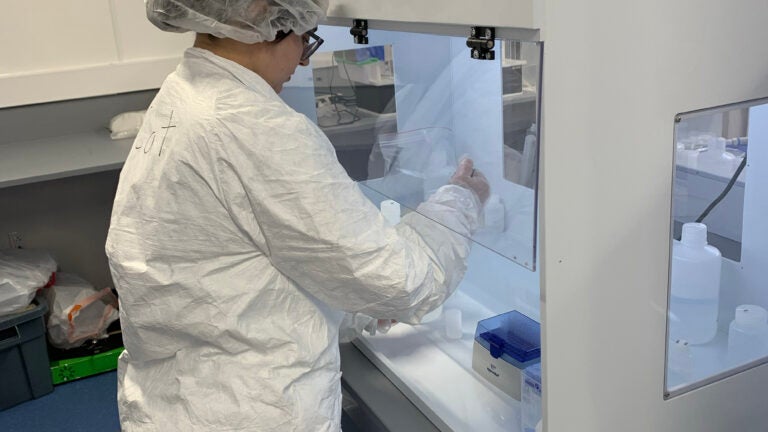
Environmental Geochemistry Laboratory
Sergio Sanñudo-Wilhelmy’s laboratory houses a Finnigan MAT Element 2, high mass resolution- Inductively Coupled Plasma Mass Spectrometer (HR-ICPMS) for elemental analyses as well as a TSQ Quantum Access triple quadrupole mass spectrometer coupled to an Accela High Speed Liquid Chromatography system for organic analysis. For ultra-low metal level determinations, Sañudo-Wilhelmy has a trace-metal clean laboratory for sample manipulations with several class-100 trace metal clean benches.
Paleobiology Lab
The Paleolab contains facilities for preparation of fossil samples including a wet lab and hood, biological and petrographic microscopes, sample polishing equipment, and a variety of computer work stations.
Mineral Separation Lab
Facilities for rock crushing, sieving, and mineral separation using a water table, Frantz magnetic separator, and non-toxic heavy liquids.
X-Ray Diffraction Laboratory
Earth Sciences has a collaborative agreement with Chemistry providing access to the Rigaku Ultima XRD, capable of standard powder diffraction in addition to thin film reflectivity (to measure thin film density, roughness and thickness), and outfitted with a searchable database.
EBSD and EDS Facility
The Jeol 7100 field-emission scanning electron microscope in USC’s Center for Electron Microscopy and Microanalysis has been equipped on an NSF grant awarded to J.P. Platt with an integrated Electron Backscatter Diffraction (EBSD) and X-ray Energy Dispersive Spectrometry (EDS) detector system. This allows electron probe microanalysis coupled with crystallographic phase identification, complete crystallographic orientation, and grain-size and shape delineation at submicrometer scale.
Earth Sciences Computing Facilities for Research and Teaching
The department provides a wide range of computational resources to meet the requirements of all of our diverse research areas. Those are available to any member of the department, and range from low-level software application support to advanced, high performance computing.
The Earth Sciences’ computational services are some of the best of any Earth science department nationwide, and are maintained at the necessary, high level to complement, rather than duplicate university-wide facilities such as CARC. This effort allow us to respond flexibly and rapidly to changing demands on resources and interoperability, maximizing computational research productivity.
Center for Electron Microscopy and Microanalysis (CEMMA)
- CEMMA USC has purchased three new SEMs:
- Workhorse JSM-6490
- Ultra-high resolution JSM-7001 field emission gun instrument
- Multibeam JIB-4500 with a focussed ion-beam for micro-milling as well as SEM.
The JSM-6490 and JSM-7001 are both equipped for low-vacuum operation, for work on biological and environmental (i.e., wet) samples.
